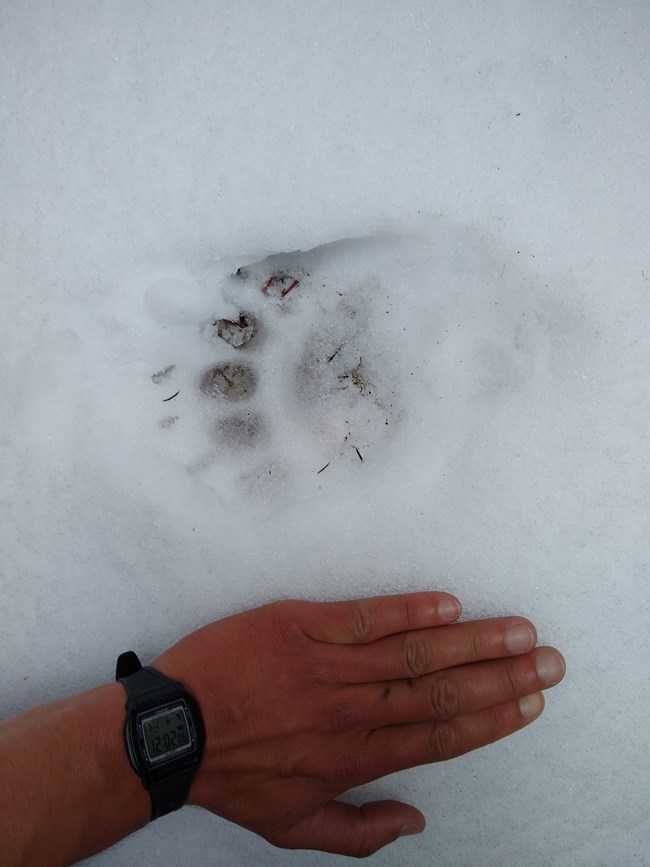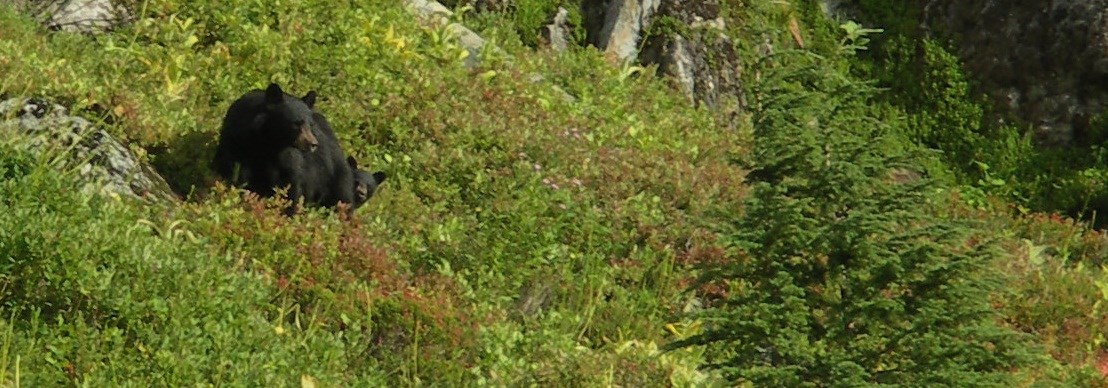
Proper food storage is essential and required (by law) for the health and safety of humans and animals in North Cascades National Park Complex.Many animals are opportunistic and will return to areas where they obtain food, including campgrounds and day use areas. This can be unhealthy for the animals, who can lose their natural wariness and foraging ability, and problematic for you and/or the next visitor. A temporary requirement for use of an IGBC or park approved bear resistant container or device may be placed in effect at any time, in any area of the park, when deemed necessary to protect wildlife. 
K. Beckwith NOTICE OF FOOD CANISTER REQUIREMENT FOR SOME BACKCOUNTRY LOCATIONSFood canisters are required for camping at certain camps and zones between June 1 and November 15 every year. Proper food storage is essential and required (by law) for the health and safety of humans and animals in North Cascades National Park Complex. Many bears (black bears, but including the occasional grizzly bear) make their home in the North Cascades, and sightings are not uncommon. Bears are opportunistic, omnivorous eaters who will take advantage of easily available food sources, particularly in the fall when they are fattening up for the winter. Deer, mountain goats, marmots, squirrels, chipmunks, mice, and some birds are also opportunistic eaters who will take advantage of unattended or improperly stored food. In a quest to obtain food, all of these organisms have chewed and/or ruined tents or other unattended gear. Animals learn quickly and will return to areas where they obtain food. This can be unhealthy for the animals, who can lose their natural wariness and foraging ability, and problematic for you and/or the next visitor. Need-To-Know for Backcountry Food Storage Be a responsible backcountry user - protect wildlife and yourself with proper food storage.
Bear canisters are required for camping at certain camps and zones between June 1 and November 15 every year. More details below. On our Wilderness Trip Planner page, you can find detailed information on each backcountry campsite, including what food storage method is allowed. In general, we encourage all backcountry users to use hard-sided bear resistant canister if food storage locker is not provided. Hanging food is allowed where a proper bear hang is possible near camp (see below for proper bear hang).
IGBC approved bear resistant canister is required at nine (9) backcountry camps and six (6) cross-country zones between June 1 and November 15 every year.
Note that bears emerge from hibernation as early as April in the area and are common sightings around the park in May. Bear canisters should be used wherever bear hang is not a practical option. The nine backcountry camps include: - Desolation - Fisher - Hooter - Monogram Lake - Pierce Mountain - Sahale Glacier - Sourdough - Thornton Lakes - Thunder Basin The six cross-country zones include: - Boston Basin (portions*) - Eldorado (portions*) - Hidden Lake (all) - Sulphide Glacier (portions*) - Tapto Lakes (all) - Trapper Lake (all) *For the three high use climbing zones (Boston Basin, Eldorado, Sulphide Glacier), canisters will be required for anyone planning to camp at or below the vegetation line (whether under snow or not), including: Boston Basin upper and lower camps, Eldorado Basin and the ridge between Eldorado and Roush Creeks, and anywhere at or below “the notch” south of Sulphide Glacier. The areas were selected as mandatory canister areas for one or more of the following factors:
Hanging food is either very difficult or impossible due to the nature of the vegetation or lack of trees suitable for hanging; wildlife have obtained food from campers in the past due to improper food storage, which can lead to habituated wildlife and thus risks to either the wildlife, campers, or gear; the presence of bears and/or other wildlife is high; and/or visitor use is high. Human food is an attractive source of calories for many animals, including rodents, marmots, goats, bears, ravens, deer, etc. For all areas of the park, proper food storage has been and will remain a requirement. Bring a waterproof sack dedicated to food and garbage storage and at least 50 feet (15m) of lightweight cord on your camping trip. Hang the food, garbage, cooking gear, and other scented items (such as toothpaste, deodorant, soap, sunblock, etc.) at least 12 feet (3.6 m) above the ground and 5 feet (1.5 m) out from the limb and from the tree trunk. Since trees with large limbs are not always present, this technique can require some time and ingenuity.
At least 100 feet from camping/sleeping areas
The Wilderness Information Center in Marblemount has three different sizes of Bear Vault and the Garcia free to loan.
Glacier Public Service Center also have several bear canisters to loan for hikers visiting the northern section of the park. Canisters must be returned to the same information center at the end of the trip. As of 2024, the Wilderness Information Center stopped issuing Ursacks due to improper usages and multiple failures to return loaned items. All food and “scented” items are required to be stored as “food items.” This includes: food (human, pet and stock), beverages, food-tainted garbage and recyclables (empty cans and bottles, food wrappers, etc.), portable grills, toiletries such as soap, toothpaste and cosmetics, bug repellent, creams, ointments or lotions. Food containers, such as coolers and ice chests, shall also be considered “food items”, unless they are completely empty and free of food particles. Dirty tableware and cookware must be washed or stored as a food item. Food items that are not properly stored are subject to confiscation and inventory.
As of 2024, Ursack is currently allowed. It is important to know how to tie the proper closure knot (double overhand) and secure it to a fixed item or hung it up like a proper bear hang. Note that the general Ursack Major is not rodent proof - you still risk animals getting into your food. There has also been evidence of wolverine destroying Ursacks in this park.
For a complete list of additional allowed canisters, please refer to the Certified Product List (backpacking and small storage containers) as produced by the Interagency Grizzly Bear Committee 

NPS Examples of UNSAFE or illegal food storage include:

Rosemary Seifried |
Last updated: October 31, 2024
